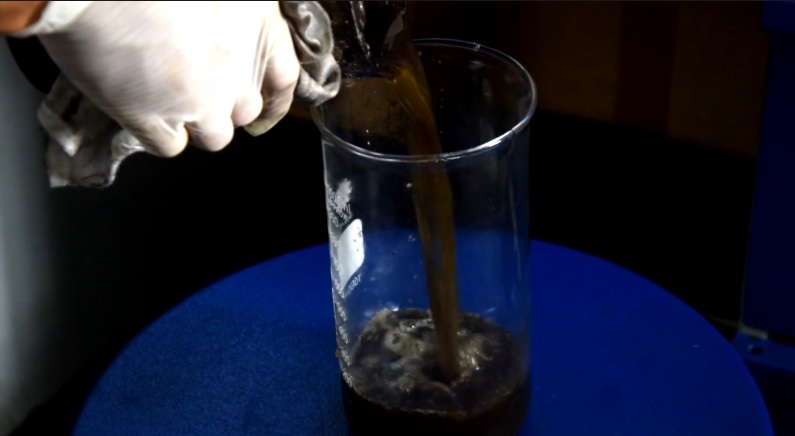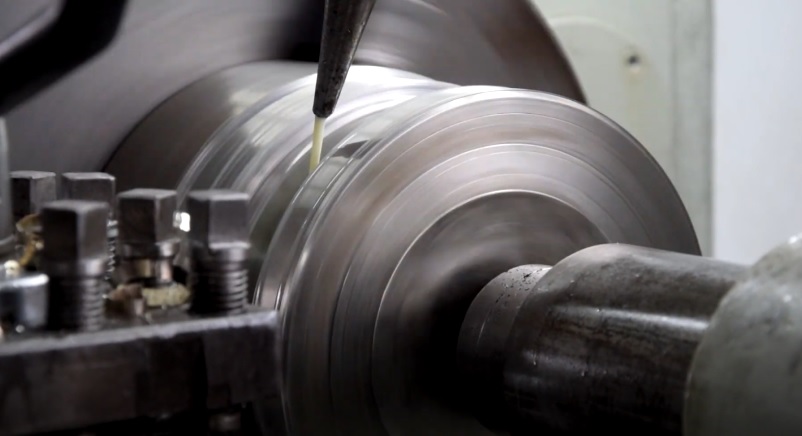Cutting fluids are emulsions used in the field of mechanical processing of metals, stone, ceramics, and plastics. Such means are used to lubricate and cool the workpiece and the working tool in the zone of their contact while drilling, cutting, and pressing are performed. Basically, cutting fluids are used for turning and milling the workpieces. The production of cutting fluids except oil products can be established directly at the enterprise that uses the product in operation, or at a specialized factory.
The use of cutting fluids has an effect on improving the quality of processing the products and reducing the tool wear. The likelihood of burrs and defects is minimized. Cutting fluids flush out abrasive particles and the cuttings formed while processing the material. Cutting fluids protect the equipment against corrosion and improve sanitation and hygiene conditions of work.
Main types of cutting fluids and quality requirements
Depending on the composition and the production technology, cutting fluids are divided into the following types:
- Oil-containing cutting fluids
Composed of properly refined mineral oil (60–95%). They may also include anti-friction, anti-foam, anti-burr, and anti-corrosion additives. The special feature of this type of cutting fluid is high lubricating ability, but low cooling effect.
- Water-soluble cutting fluids
Water-soluble cutting fluids may contain mineral oils, water, alcohols, glycols, corrosion inhibitors, other additives, organic and inorganic substances. The special feature of this type of fluids is high cooling ability, relatively low stability, and poor lubricating properties.
- Mineral cutting fluids
The production of cutting fluids of this type is based on catalytic hydrogenation of petroleum fractions.
- Synthetic products
Solutions with a high degree of cooling prepared on the basis of surfactants, water-soluble polymers, additives, and water.
- Semi-synthetic fluids
Not more than half composed of mineral oils, water, emulsifiers, and additives. Distinguished by optimal cooling and lubricating properties.
- Emulsions
They contain up to 85% of medium-viscosity mineral oils. The coarsely dispersed product is distinguished by high lubricating properties.
The appropriate requirements apply to different types of cutting fluids for the purposes of dispersing the main ingredient. Coarsely dispersed products are used in emulsions. The production of semi-synthetic and synthetic cutting fluids involves dispersion to the colloidal and molecular levels respectively.
Conventional technologies for production of cutting fluids
The production of cutting fluids involves mixing the base ingredient with additives. During the product preparation, the ingredients are preliminarily dosed, mixed, and dispersed to form small droplets of oil phase. The quality of emulsion depends on the size of these droplets — the smaller they are, the better. Conventional methods of dispersion do not always allow achieving a sufficiently high-quality result; therefore, the cutting fluid does not come out that stable.
Mechanical agitators, compressed air based mixing technologies, homogenization, steam bubbling, circulation mixing, and shock-impulse mixing are used. In this case, coarsely dispersed mixtures, emulsions of poor sedimentation stability are obtained. They break down, and the additives settle. Under this method of production, part of petroleum products does not almost emulsify. The production of cutting fluids by means of hydrodynamic mixers with superposition of high-frequency and low-frequency vibrations is also conventionally applied in practice. But when working with this equipment, the formation of stagnant zones is observed.
A vortex layer device (AVS) will help in solving the problems associated with conventional methods of production of cutting fluids. This equipment is represented in GlobeCore catalog.
Technology for production of cutting fluids by means of AVS

A vortex layer device is a vortex layer device with a non-magnetic operating chamber. Ferromagnetic needles are placed inside it. When the device is turned on, the inductor creates a magnetic field therein which causes intensive mixing of ingredients and dispersion. In this case, each ferromagnetic needle in the operating chamber acts as a diminutive mixer. The cutting fluid ingredients are intensively mixed and dispersed due to colliding with one another, the chamber walls, and the ferromagnetic needles. In addition to direct dispersion and mixing, the processes of electrolysis, electromagnetic processing, acoustic vibrations, and high local pressure are observed here.
AVS can be used as the main unit for mixing the cutting fluid ingredients and obtaining a high-quality product. Continuous production of cutting fluids using a vortex layer device shall include:
- feedstock tanks for feeding and preheating the initial components;
- dosing pump;
- AVS-100 or AVS-150;
- receiving tank.
Since AVS allows obtaining more stable mixtures with good fluidity unlike conventional methods of production, the equipment can be used on technological lines not only as the main unit, but also as auxiliary equipment. Processing of cutting fluids in the vortex layer device allows obtaining a high-quality, homogeneous emulsion from the product previously prepared by classical methods. In this case, AVS is installed at the end of the conventional line and used for final processing of the mixture.
Advantages of production of cutting fluids by means of a vortex layer device
The vortex layer devices represented at GlobeCore are distinguished by the following advantages compared to conventional equipment for production of cutting fluids:
- High capacity
When AVS-150 is used on the technological line for continuous production of cutting fluids, the device is able to prepare 5 cubic meters of product per hour.
- Versatility
The unit is suitable for direct production of cutting fluids and for processing of cutting fluids prepared by conventional methods.
- Cost-effectiveness
The energy consumption of AVS-150 during the experiment for production of cutting fluids made 9.5 kW/h.
- Ease of use
The device with a control section is distinguished by compact dimensions and light weight; therefore, it requires no pedestal or additional structures for installation.
- High intensification of processes
Production of cutting fluids and preparation of conventionally produced cutting fluids take just a few seconds.
AVS will become the main or ancillary equipment at the enterprise for production of cutting fluids. Using this technique, you will manage to increase the efficiency of production lines, to simplify the technological process, and to make it less energy-consuming, and the final product will be distinguished by high quality, stability, and homogeneity.



